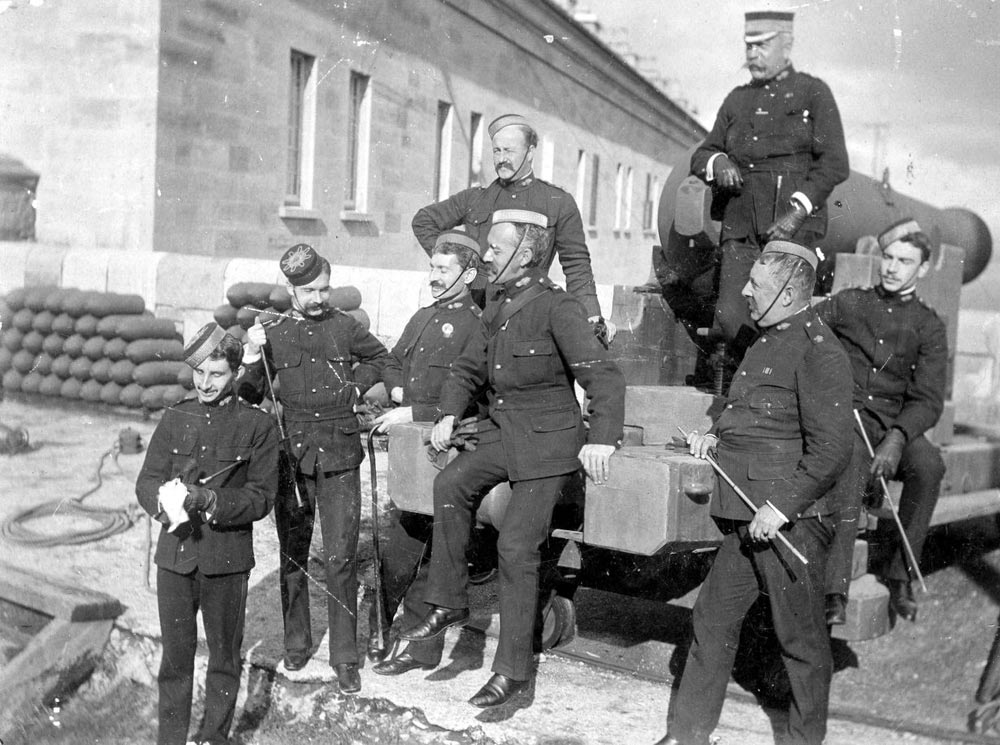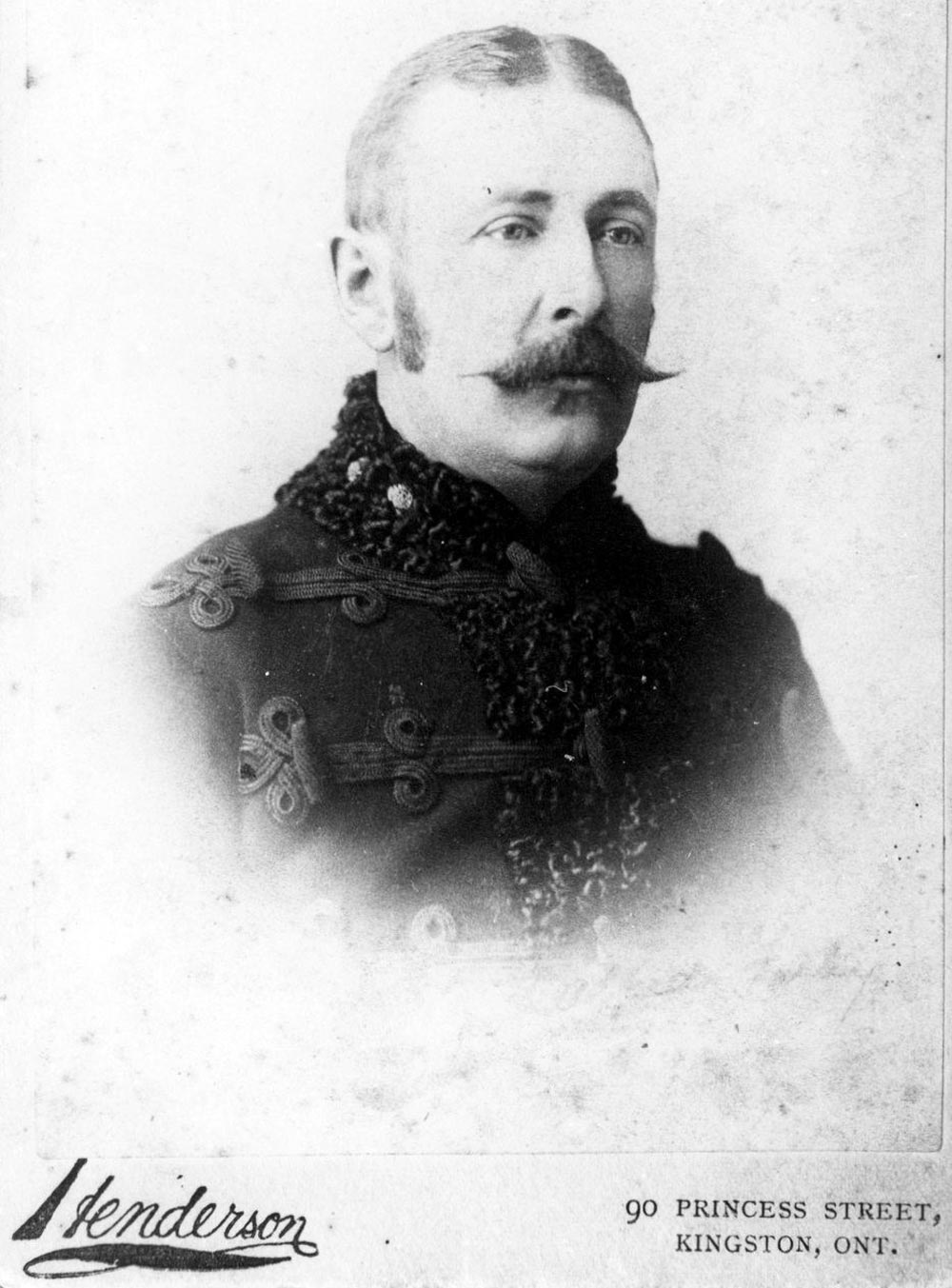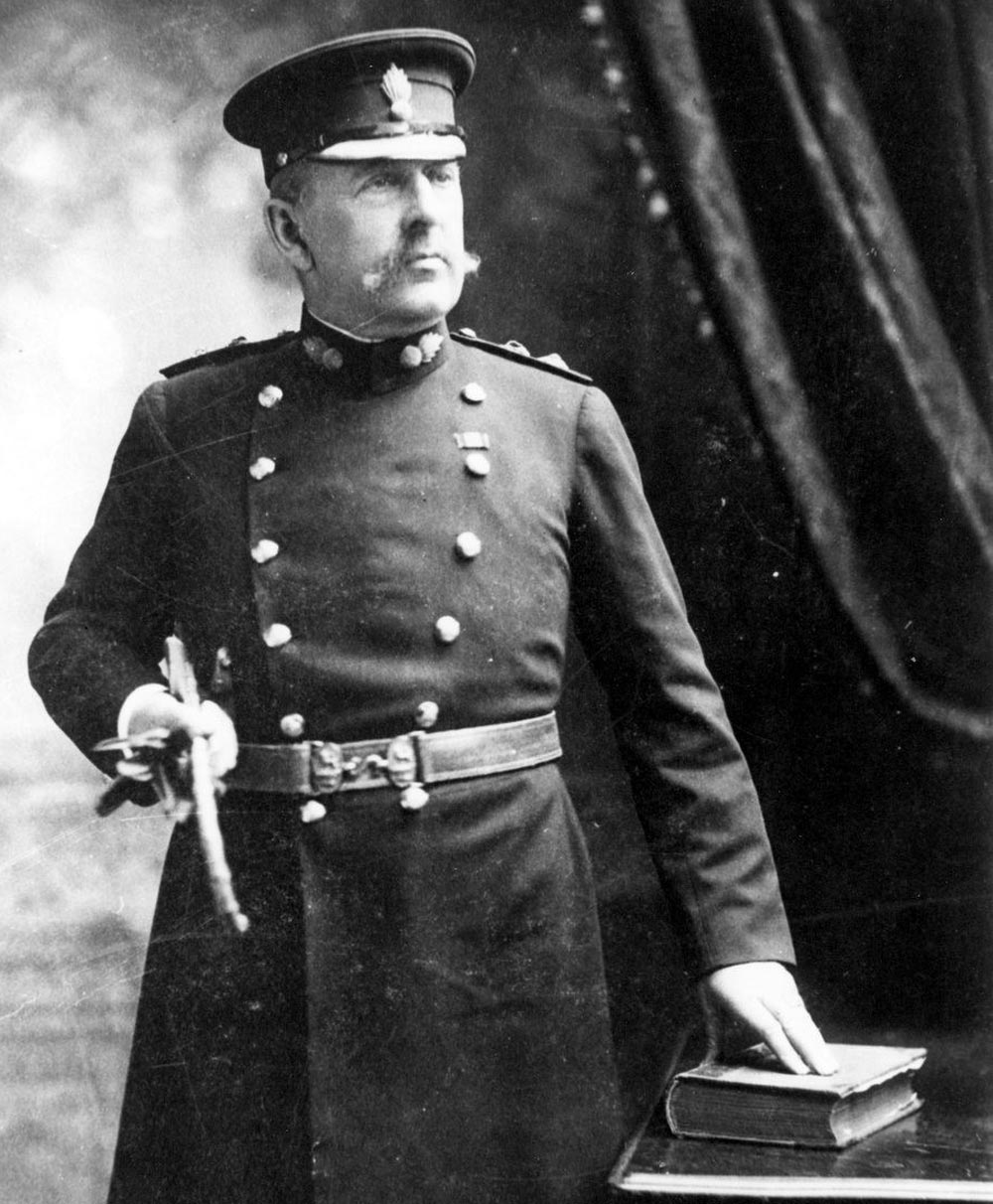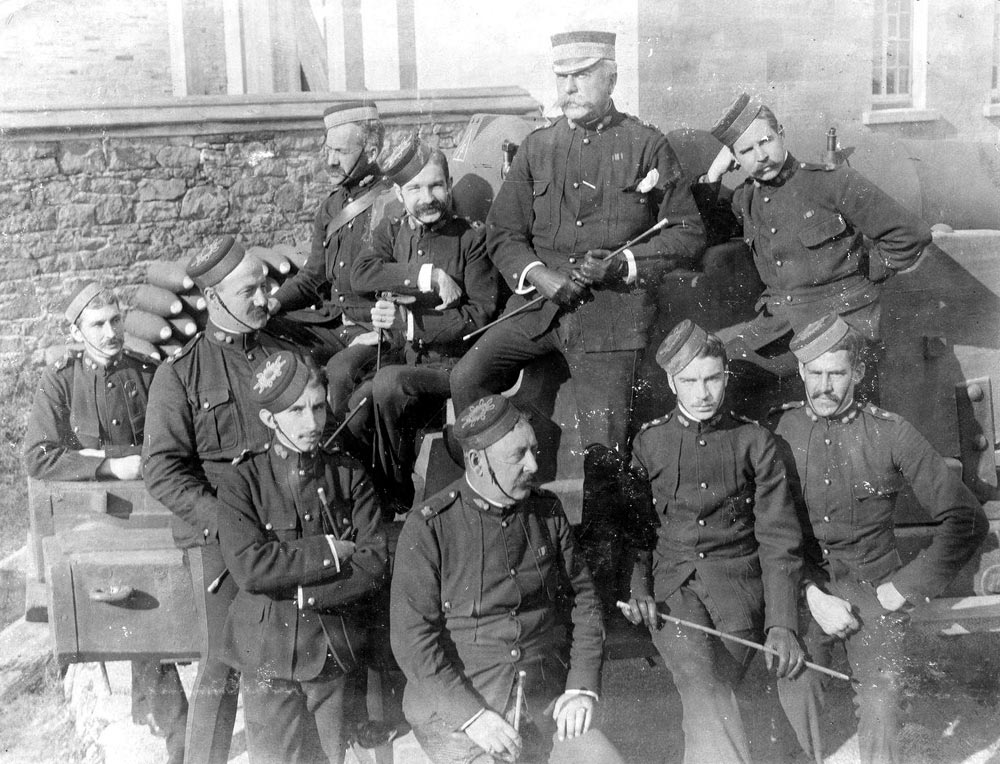

Andrew Oakden
Stag Special
The RCA Museum has a striking collection of heritage photographs showing Capt Alfred A. Farley, a good-natured and ubiquitous soldier from B Bty and the Royal School of Gunnery in the 1880s.
Capt Farley joined B Bty as a Non-Permanent Active Militia soldier in 1882, then as a founding member of the Regiment of Canadian Artillery in 1883 and as a Permanent Active Militia or permanent force soldier in 1884.
In 1880, Capt Farley was a reservist with the 15th Battalion, Argyle Light Infantry, in Belleville, Ont. At this time, the Canadian Militia was a volunteer force organized for the defence of Canada.
The Militia consisted primarily of part-time soldiers, who trained during weekends and holidays. The volunteer force included contracted full-time teaching staff and leadership at the Gunnery schools, the officers and non-commissioned personnel at A Bty and B Bty. At the schools, the federal government established a new system of training that emphasized marksmanship and field training.
Despite improvements, the Canadian Militia remained an imperfect force, with low levels of funding and limited resources, which made it challenging to maintain readiness for potential threats.
In 1880, Queen Victoria approved the Royal School of Gunnery’s new title. Also, in 1880, B Bty exchanged quarters and provinces with A Bty. MGen R.G.A. Luard, the General Officer Commanding the Canadian Militia, became disillusioned with the Royal Schools of Gunnery’s low-efficiency standards and decided to have each battery switch location.
Understandably, both batteries anguished over leaving their prospective forts, with A Bty departing Fort Henry in Kingston, Ont., for the Citadel in Quebec City, Que., with B Bty doing the reverse. They stayed in their newly appointed quarters for five years, with the battery’s triumphant return to their original forts and provinces starting in September 1885.
In 1883, the Commanding Officer (CO) of B Bty in Kingston was LCol Charles E. Montizambert, a veteran of the Fenian Raids and highly regarded military leader, taking over for MGen Strange in 1881.
Gen Strange received forced retirement at 51.
MGen Luard said Strange was an “able and well-known officer of the Royal Artillery who has devoted 10 of the best years of his life and has been like a father to the Artillery of Canada.”
The “able and well-known” phrasing does not adequately reflect Strange’s prodigious, larger-than-life legacy as the father of the Canadian Artillery.
In 1883, the official regimental lineage of the RCA started with the authorization of the Regiment of Canadian Artillery by Militia General Order 18/83. The CO of the Regiment and Inspector of the Artillery for all of Canada was the prior A Bty Comd LCol Irwin, who carried out with great insight and pragmatism much-needed reforms delegated by MGen Luard.
The reforms included adding a third training battery and a school of gunnery called C Bty, located on the West Coast and formed in 1887. Other reforms included combining the three batteries and Royal Schools of Gunnery under one Brigade or Regimental unit with standardized policy and efficiency standards.
The teaching staff at the Royal School of Gunnery, including Capt Farley, built friendly and engaging relationships with the Active Militia artillery students. The Canadian Militia regarded the staff officers and non-commissioned staff as paid instructors on short-term contracts rather than regular army soldiers.
Their principal functions at the batteries were managing British weaponry left behind and instructing the Active Militia. In 1883, Canada updated the Militia Act and approved the formation of the Permanent Active Militia or permanent force.
The first reference to a Permanent Active Militia (PAM) came from General Order No. 2 in May 1884. Before this date, the staff were part of the Non-Permanent Active Militia or Canada’s part-time volunteer army, not the regular army or permanent force, which did not exist.
Starting in 1884, the Canadian Militia enlisted permanent force personnel, such as Capt Farley, into the Regiment of Canadian Artillery for General Service, which excluded Foreign Service, but not active operations in Canada.
The Regiment of Canadian Artillery, including Capt Farley, participated in active operations during the North-West Rebellion or North-West Resistance from March 1885 to July 1885. After the last battle and surrender of Big Bear, reservists or members of the Non-Permanent Active Militia returned to their homes.
Still, regular units, including A and B Batteries, stayed in the West to maintain order and assist the NWMP. In the winter of 1885, married officers and non-commissioned personnel returned to their wives and family, but single soldiers stayed behind.
Capt Farley remained in the West and returned in June 1886. After the conclusion of the active operations, the officer and non-commissioned personnel happily returned to their original forts – A Bty to Fort Henry and B Bty to the Citadel.
The heritage photos of Capt Farley and other soldiers reflect a stirring and dramatic period in RCA history. While historians appropriately mention the founding of A Bty and B Bty in 1871, representing the first full-time and permanent elements of the Canadian Militia, they routinely overlook the formation of the Regiment and Permanent Forces in 1883 and 1884.
Also, the punitive five-year transfer of quarters between A and B Batteries and the harsh 15 months in the West during the rebellion and subsequent return to their original barracks are worthy of further discussion.
As for Capt Farley, he was promoted up the ranks to lieutenant-colonel and continued in Regular Forces until 1905, and died of ill health the following year.
Capt Alfred Farley in Kingston, Ont., circa 1882-84.
Officers of B Bty at the Citadel in 1886 with Capt Alfred Farley.
Officers of B Bty at the Citadel in 1886, with Capt Alfred Farley, pictured front center.



